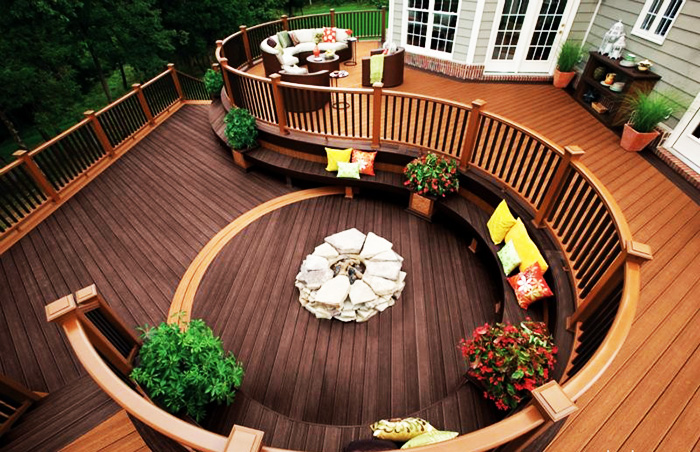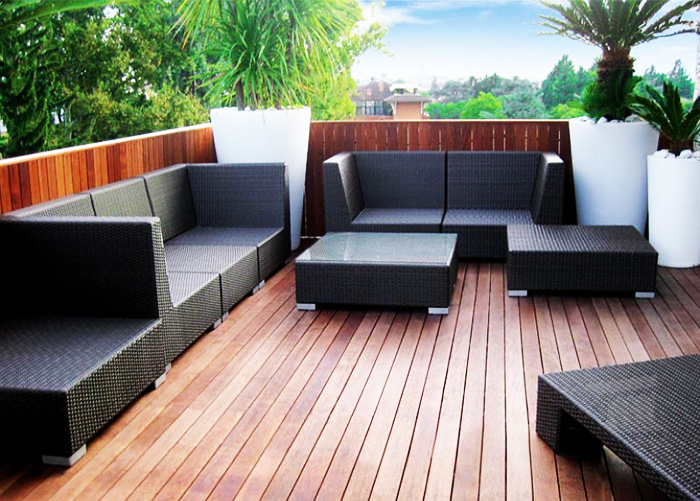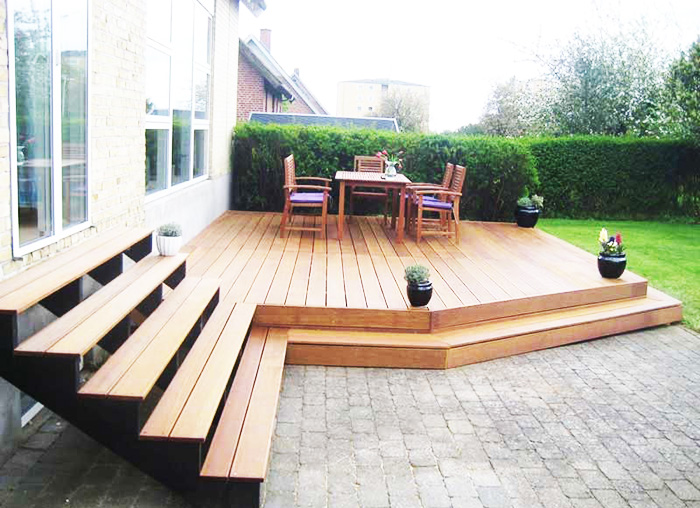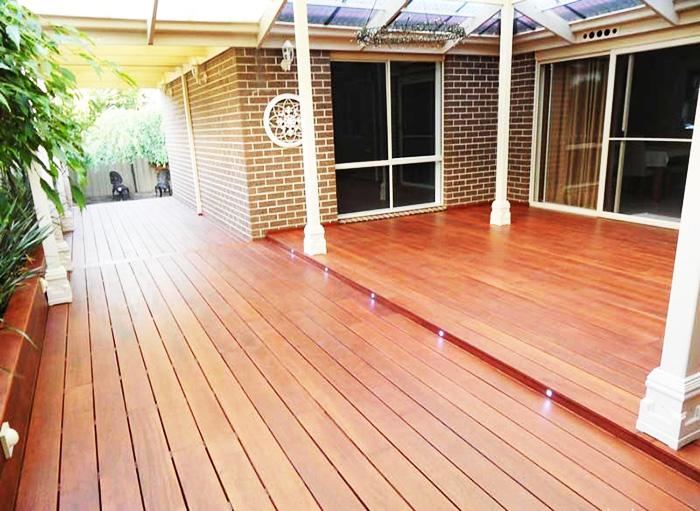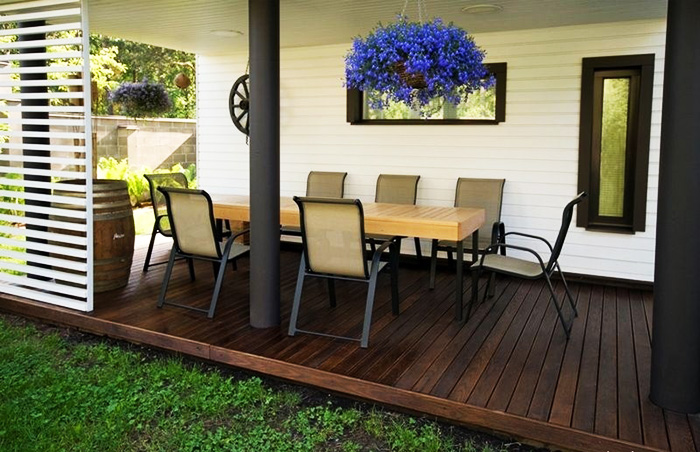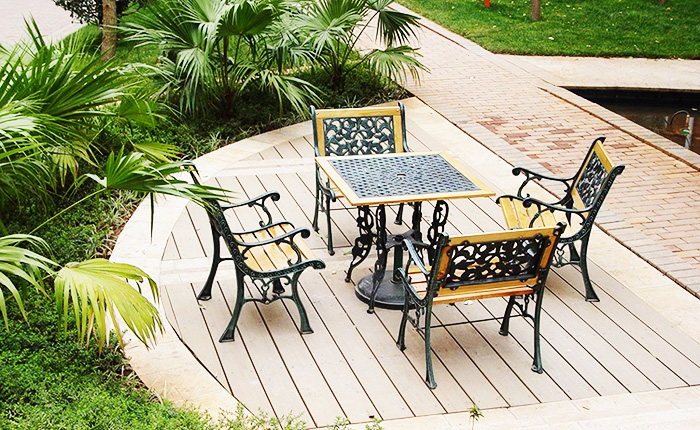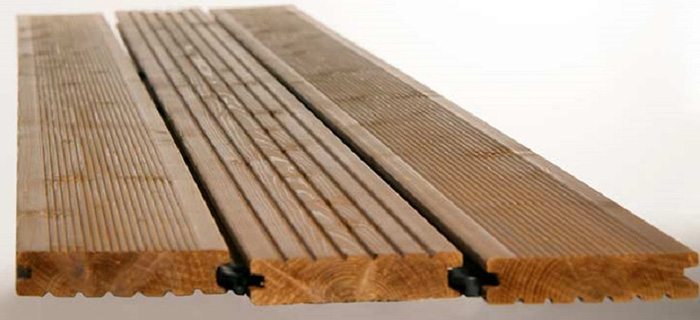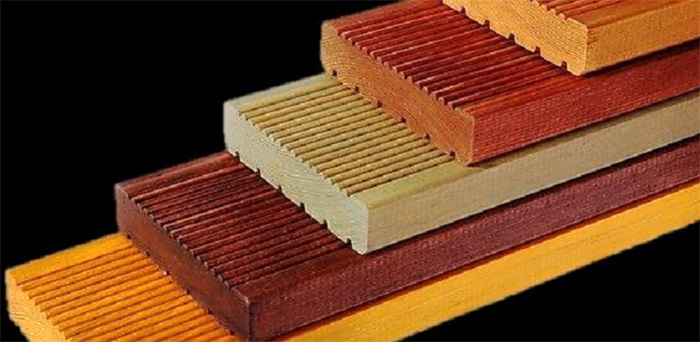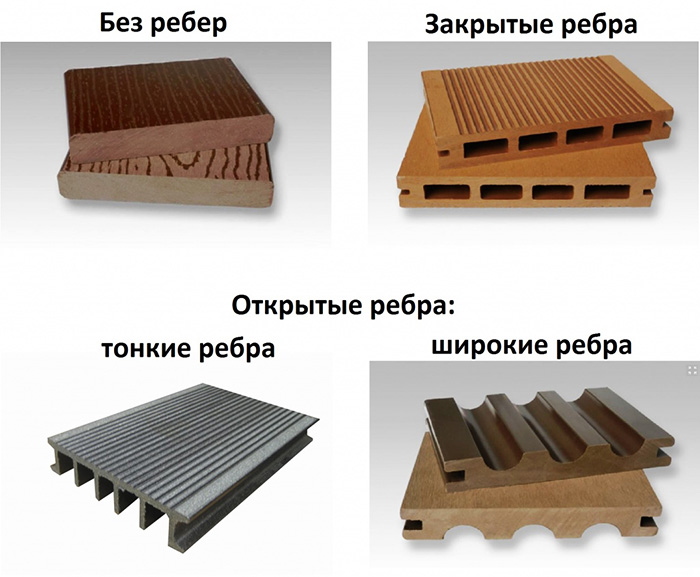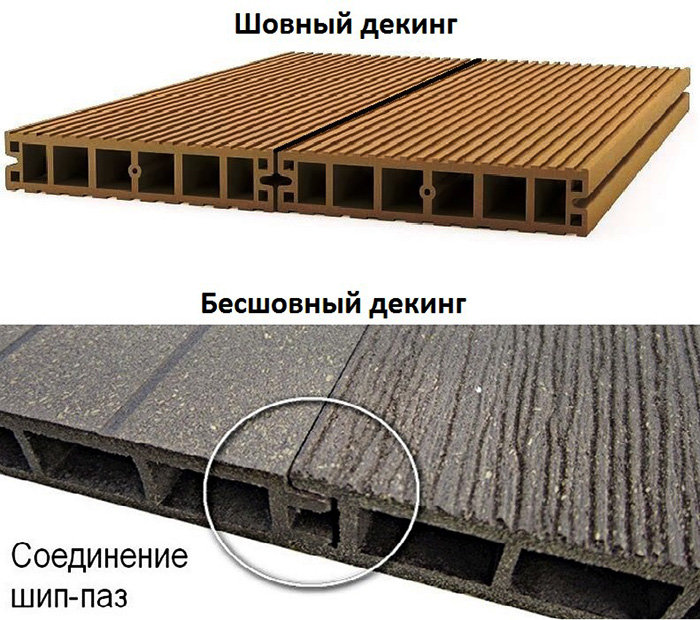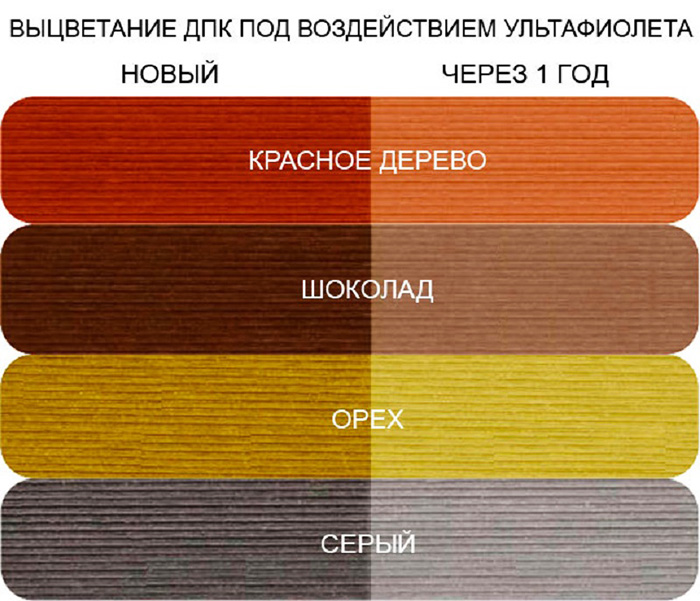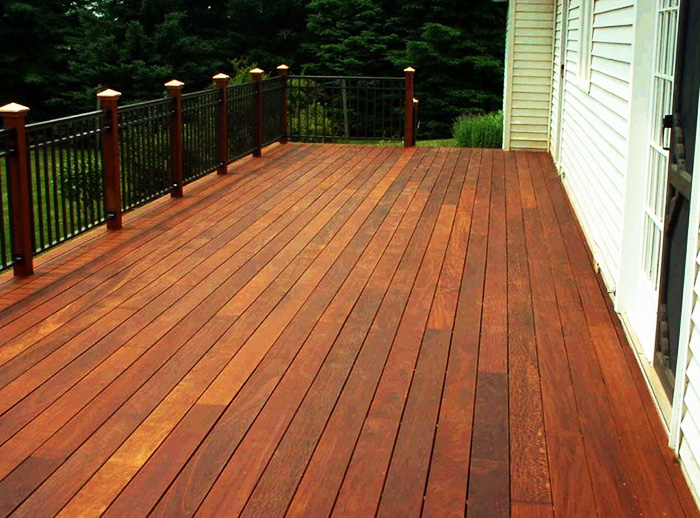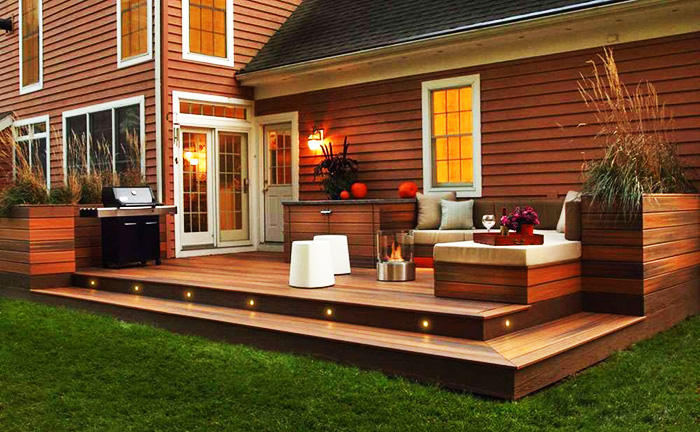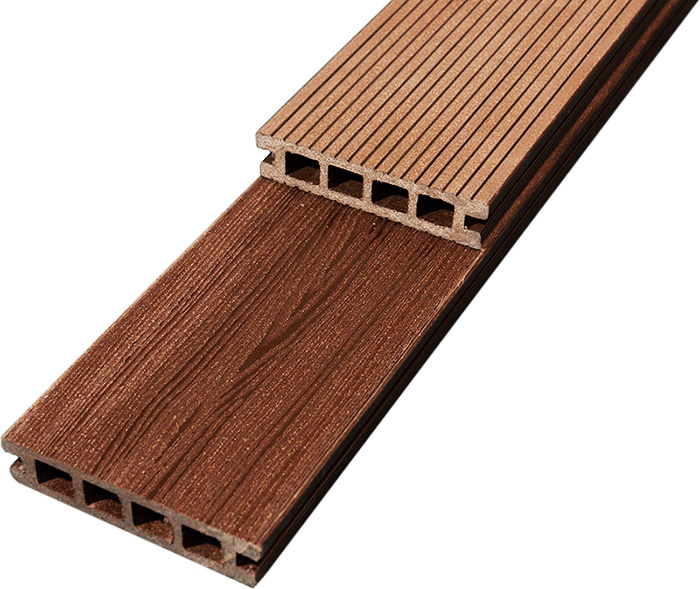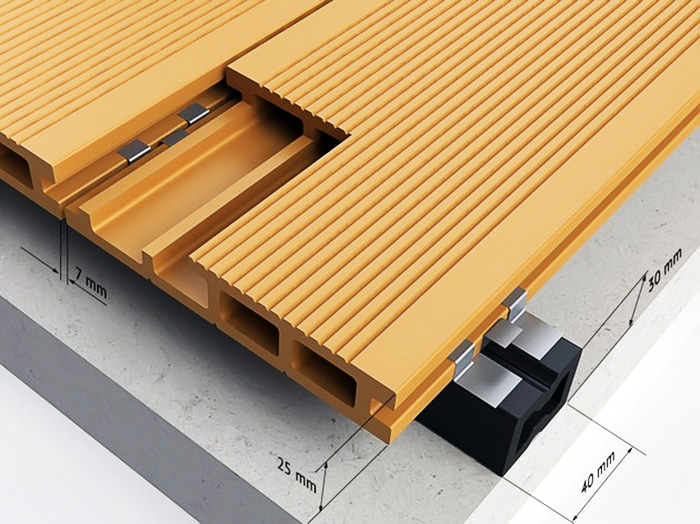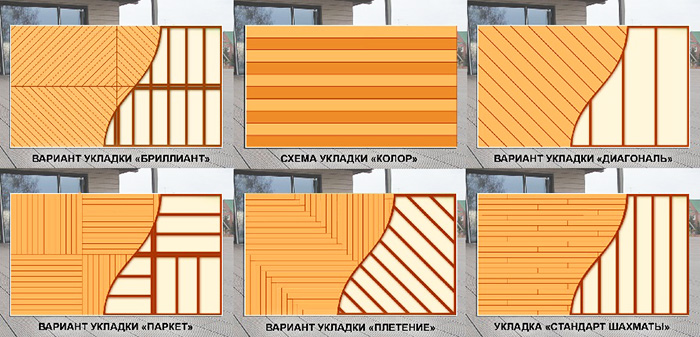Decking - decking: analysis of characteristics, advantages and disadvantages, features of use
Towards modern building materials make more and more stringent requirements, the most important of which is a harmonious combination of environmental safety and high performance. In this sense, decking (decking) is one of the best finishing materials with a wide range of applications and unique technical parameters. In this article we will analyze the technical and operational characteristics of the main types of decking. We will describe the advantages and disadvantages of the material, selection criteria and features of use.
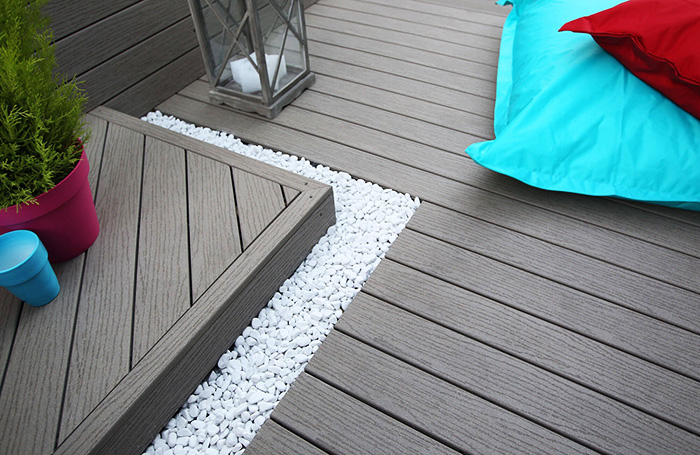
Decking is a modern artificial finishing material that surpasses natural ones in its parameters
PHOTO: woodplast.com
The content of the article [Hide]
Use of decking
High-quality decking, with proper care, is weakly susceptible to any, even extreme, atmospheric manifestations and intense physical stress. High strength and performance characteristics allow this material to be used as a decorative and protective finish for the following structures:
Objects and building structures using decking as cladding:
Types of decking and their characteristics
Decking is usually classified according to the type of raw materials used and the way it is processed. Depending on this, its operational characteristics and scope of use differ significantly.
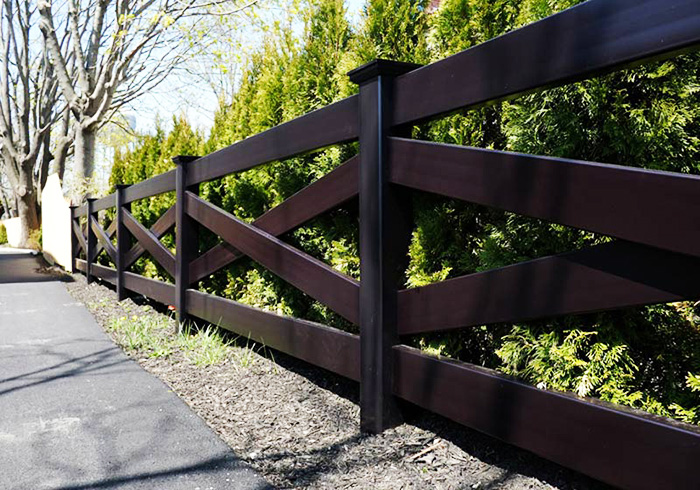
Decking made of solid wood or with closed edges can be used not only for cladding floor coverings
PHOTO megastrolis.ru
From an array
Solid wood decking is actually an additional processing of the floorboard to give it special properties that allow the material to be used in extreme conditions. The most budget products are not subjected to any processing and are made from ordinary coniferous wood: spruce, larch, pine. The raw material for the more expensive coating is oak, cedar, Karelian birch, ash. Elite products are made from exotic wood species: wenge, merbau, grappa, cougar, etc.

To protect against mechanical stress and biological corrosion (rot, mold, fungus), solid wood decking is subjected to special processing:
WPC terrace board
WPC (wood-polymer composite) is a material consisting of wood flour as a filler and a polymer binder. There are several options for WPC, which differ both externally and in their operational parameters. They are classified according to the degree of filling the plastic with wood elements:
Sizes and color palette
Both the technical and decorative characteristics of solid wood and WPC decking differ significantly. However, manufacturers, whenever possible, try to bring the main dimensions of the product to certain standards:
| Parameter | Array | DPK |
|---|---|---|
| Width, mm | 90-250 | 140 |
| Length, m | 1,5-4 | 3-6 |
| Thickness, mm | Thin 18-22 Average 25-30 Thick 42-48 | Average 28 Decking tiles: 25x25 ... 50x50 |
| Color palette | Natural color and texture. Tinted in any colors and shades typical for timber | Limited color gamut. The colors are saturated unnatural. |
| Front surface | Smooth Corrugated | Smooth (with an imprint of a woody texture, insignificant in relief); Corrugated |
| Back surface | Solid (no ribs); Anti-warping rip cuts | Solid - close to the floorboard in strength; With thin ribs - not load-bearing, fits on a solid base; With thick ribs - load-bearing, fits on logs. |
| Internal structure | Solid array | Solid array; Closed stiffeners. |
Depending on the type of connection, the following types of decking are distinguished:
Advantages and disadvantages of using
The use of decking in various building structures has both advantages and disadvantages. Of the most tangible advantages for the user, the following are worth noting:
However, decking also has certain technical limitations:
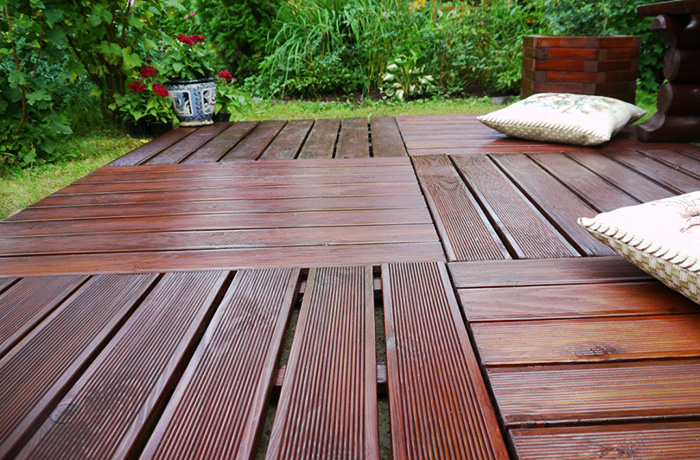
One of the types of decking "garden parquet" can be laid simply on a gravel base
PHOTO o-drevesine.ru
Leading manufacturers
The production of decking, both from solid wood and from composite, is a high-tech production. However, the widespread popularity of this material has led to the emergence of many imitations and outright fakes, which outwardly resemble decking, but do not have its advantages. Of the most reliable and popular decking manufacturers, the following can be noted:
Selection criteria for decking
When choosing a decking, in addition to color preferences and / or texture imitating wood, you should pay attention to some technical characteristics.
Laying methods
There are two main ways to install decking:
Depending on the way the boards are arranged, the following types of laying are distinguished:
Of these, the most economical is the diagonal, since it allows you to fully use all the cuts of the boards.
Video: decking installation rules

Features of operation and maintenance
WPC decking practically does not need additional processing. Its resistance to external weather factors, its further processing is economically inexpedient, since protective compounds will extend the service life of the material only slightly.
Solid wood decking, despite the special treatment, needs periodic impregnation with special compounds:
Oils are one of the best options. Oils do not change the texture depth and color of the material. Increases durability and protects the product from fading. Suitable varnishes for decking are: Neomid, V33, Vallti.
conclusions
Decking, especially made of WPC, is one of the most technologically advanced materials with a wide range of applications. However, you should carefully choose such material so as not to purchase a low-quality fake.




